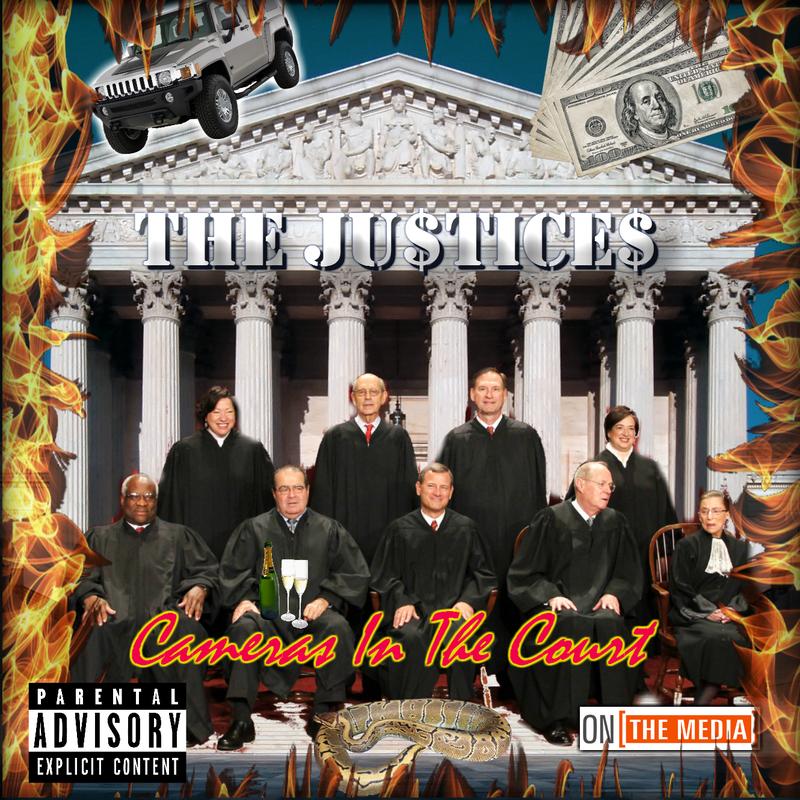BOB: For decades, one notable performance of the court’s proceedings has been Nina Totenberg’s so-called dirty reads on NPR. Audio of oral arguments is only released on Fridays (with rare exceptions)... so Nina has become perhaps the most admired practitioner of the art of on-air Supreme Court oral interpretation. Here she reads from the transcript of a case last year about religious rights for inmates. Specifically, whether Muslim prisoners may wear half-inch beards in Arkansas prisons.
CLIP:
TOTENBERG: Justice Breyer - “then do you think this might be what Congress was trying to prevent when it said that exaggerated fears often allowed prison officials to stop prisoners from exercising their religious rights?” Answer - “just because we haven't found the example doesn't mean they aren't there.” Justice Alito, exasperated - “then why can't the prison just give the inmate a comb and tell hi m to comb out his beard? And if there's a tiny revolver hidden in his half-inch beard, it will fall out.”
BROOKE: The dirty read. You’re not crazy about that term.
TOTENBERG: No I’m not! I think I was guilty of the dirty read when I was young in radio. The dirty read suggests you’re taking neutral terms but with your inflection you’re making them sound nefarious. And I don’t ever do that anymore. What I do do..., is try my best to bring the listener into the courtroom through my voice. Picking the pithiest parts of the argument and as best as I can acting them out as a I heard them. So that’s not a dirty read. That’s an accurate read.
BROOKE: Of course the reason the dirty read even exists, is because the justices forbid filming of any kind during oral arguments or on decision days. And some reporters even agree.
TOTENBERG: Because it’s a very loosy-goosy, and brutal sometimes, rough-and-tumble up there. And, if there were cameras some people would definitely pull their punches and oral arguments would not be what it is. But the most important thing, I think, is that if these nine people had their faces on t.v. all the time they would have to have an enormous security apparatus to protect them all the time. That doesn’t exist today. And they live in an ivory tower enough. It’s good that I can see Elena Kagan squeezing a melon at the safeway or the whole foods. It’s good that some of these folks drive themselves. When they go to a big event, they’re driven. They’re protected. But they lead normal lives. And if they didn’t, that ivory tower would become farther up in the sky and even more remote and I don’t think that would be good for the country.
BROOKE: Slate’s Dahlia Lithwick is sympathetic to the privacy argument, but still comes down on the side of increased transparency.
LITHWICK: The arguments I have no patience for are the arguments that say it’s too complicated for lay people to understand and if they saw it they’d just get all confused and weird. When you have an institution that 90 percent of what it does is private, what it does in public needs to be seen by the public.
BROOKE: But she concedes the public won’t be seeing them, Courtside, anytime soon.
LITHWICK: I think those of who watch for signs that the justices are going to open up to more technology, they’re gonna allow cameras in there --we always think let’s look at the youngest ones. Let’s look at Justice Kagan and Sotomayor, let’s look at Justice John Roberts. He has young kids. Maybe he’s going to be open to it. And inexorably, what happens is they say at their confirmation hearings: you know, i’m open to the possibility of cameras in there. I understand, people need to see. And then within six months on the bench: they’re like nope nope nope nope, never gonna happen. So there it is: I don’t think it’s about youth, it’s about privacy.
BOB: The justices have spoken many times over the years explaining their views, so we thought we’d let them speak for themselves. Here are justices Scalia, Kennedy, Kagan, Breyer, Sotomayor, Thomas, Ginsburg, and former justice Souter on the issue of cameras in the court, in their own words. More or less.
[song]

